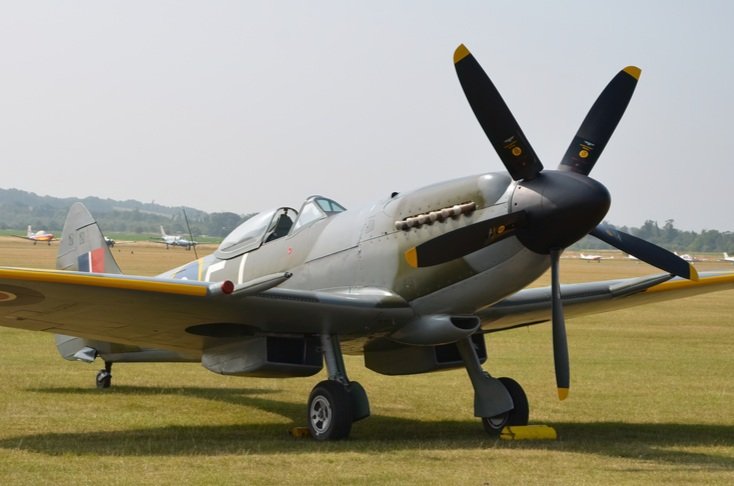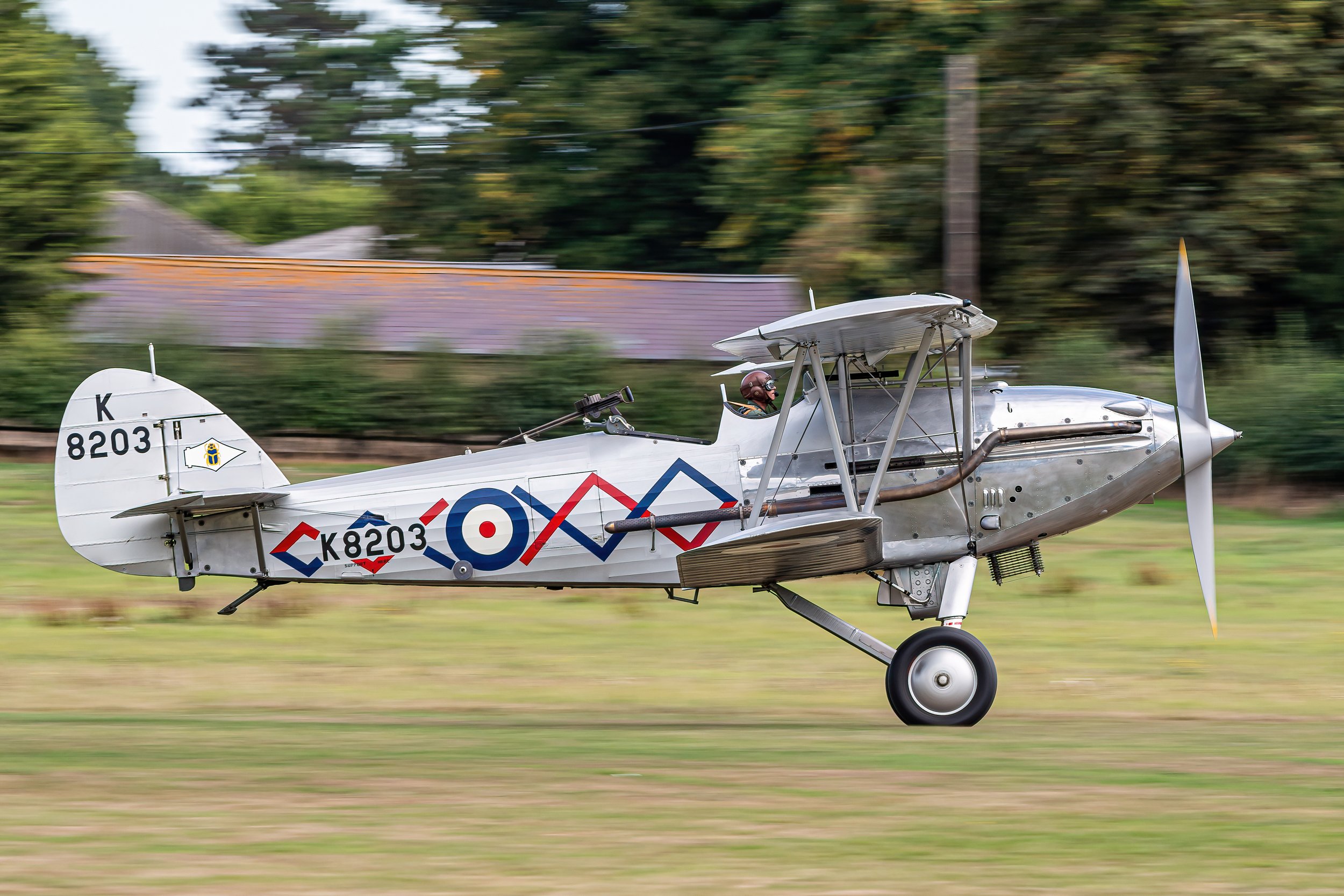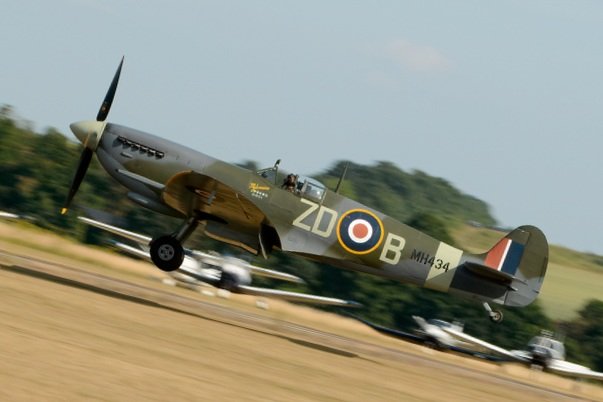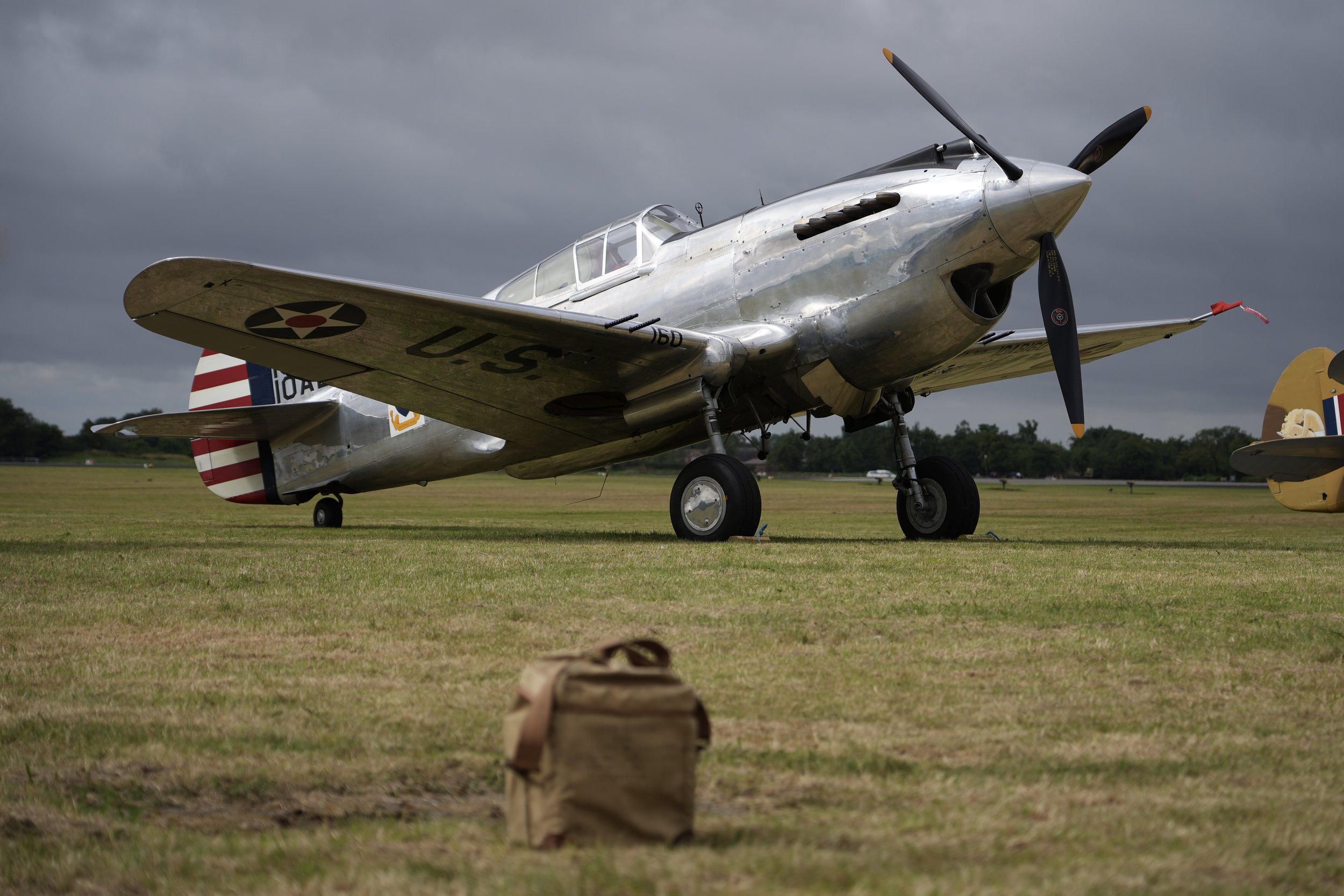Nimrod G-BURZ
Year built
1934
Aircraft
Nimrod II
Base
Duxford Airfield
In 1972 the Nimrod was discovered half buried on a scrap dump at Ashford in Kent, more or less complete, but well corroded.
The aircraft remains were recovered and donated to the RAF Museum, who held them in store at RAF Henlow. The fuselage only was sold off by the museum when the Henlow storage facility was closed, to Mike Cookman, who was constructing an Hawker Typhoon at the time, from relic parts. Aero Vintage Ltd. bought the Nimrod fuselage from him in August 1991, and later that year, the wings (including the wings from a second Nimrod that Aero Vintage acquired, but a Nimrod I) and tail unit, which by now had re-appeared at the RAF Museum's Cosford 'deep' storage facility. The engine remains with the RAF Museum.
Still with no known identity established, a letter printed in Wingspan magazine concerning this aircraft, resulted in the proprietor of the Kent Battle of Britain Museum at RAF Hawkinge, Mike Llewellyn, telephoning Aero Vintage with the news that they had a display case full of parts from this Nimrod. This included the control column, the instrument panel, map box, ammunition chutes, and much besides, but most importantly - and the real prize, was the original cockpit data plates from the aircraft, indicating it's serial number 41H 59890 and RAF number, K 3661.
Interestingly, the Nimrod was discovered only a couple of miles or so from where Lympne airfield was, and a photograph has emerged of the Nimrod's tail showing the aircraft (with a very late 802 Sqn crest on the fin) as it was right at the end of its service life; the photo gives some evidence that it may have been an instructional airframe as there is fabric damage. That lead to the suggestion that the photograph was taken at RAF Lympne, in the then-standing Belfast Hangars where there was an FAA mechanics school. In the background of the original photo can be seen Boy Scouts and well-dressed visitors, suggesting an open day. RAF Lympne was host to HMS Buzzard, formed in 1937 with several aircraft from HMS Ark Royal, but not the Nimrod at this stage, as it was known to be at Lee on Solent in 1939 (in storage possibly). The Naval Air Mechanics School was located at RAF Lympne in Sept 1939 (as HMS Daedulus ll), and we believe the aircraft may have been sent to RAF Lympne as a ground instructional airframe. It next appears at Ashford Air Training Corps hut on the road out of Ashford leading to Canterbury, just on the outskirts of Ashford. The ATC are still on this site, which is just 100 yards from the rubbish dump where the airframe was found. An ex-cadet from that period recalls there being the Nimrod in their hut with the wings stacked behind the fuselage, but whether it came from RAF Lympne or direct from FAA stocks is not known.
Restoration was started in earnest in 1992, with the first challenge being to re-manufacture the spars, which are a complex roll-formed item manufactured from high tensile steel strip. Without this extremely difficult part being successfully re-made there would have been no point in going further forward, as Retrotec (the restoration arm of Aero Vintage and Historic Aircraft Collection Ltd. (HAC) were only prepared to restore the aircraft if it could be 100% authentic down to the smallest detail. The fortunate discovery of a large number of drawings in Denmark, eased the way forward after the spars were re-manufactured satisfactorily, and further years of work and research has lead to the aircraft towards completion. A Kestrel engine was found in Canada, and rebuilt to the appropriate specification. The Nimrod first flew on 16th November 2006 at Duxford.
This aircraft is very different to the Nimrod I, in that it has swept wings, a tail wheel, a very complex steam condensing cooling system and a gas start system. The engine was more powerful also, a Kestrel VI engine being specified.
| Back to Top |
Hawker Nimrod II
The Hawker Nimrod was a British carrier-based single-engine, single-seat biplane fighter aircraft built in the early 1930s by Hawker Aircraft.
In 1926 the Air Ministry specification N.21/26 was intended to produce a successor to the Fairey Flycatcher, then in its fourth year of Naval service. By the time it was replaced by the Nimrod in 1932, the Flycatcher had become so obsolete in terms of its speed that RAF officers who flew it often joked that a sprightly fly might actually give the aircraft a run for its money. None of the aircraft designed to this specification were selected for production after trials in 1928, but the radial-engined Hawker Hoopoe, not actually designed to N.21/26, was considered promising enough to be further developed. Despite the Navy's traditional preference for radial engines, Hawker's designer Sydney Camm was convinced by his experience with the landplane Hawker Fury that the future for shipborne aircraft also lay with inline engines and began such a design, powered by a Rolls-Royce Kestrel. Before it was completed Air Ministry specification 16/30 was written around it. It flew under the initial name "Norn" early in 1930, received a production contract and was renamed Nimrod.
The Nimrod had an overall similarity to the Fury: it was a single-seater biplane with an open cockpit, fixed undercarriage and guns firing through the propeller. Its unswept, constant chord, round-tipped wings had an unequal span and strong stagger, the latter partly to enhance the pilot's view. It was a single-bay biplane braced with outward-leaning N-form interplane struts, with the upper plane held a little above the upper fuselage by cabane struts. The fabric-covered wings had metal spars and spruce ribs and carried balanced ailerons only on the upper wings.
The Nimrod's fuselage was a Warren girder structure of tubular steel and aluminium, surrounded by stringers that defined its oval cross-section. The Rolls-Royce F.9MS engine, later renamed the Kestrel IIMS was closely cowled in aluminium and the rest of the fuselage fabric covered. As with the Fury, the upper fuselage line was highest at the cockpit, placed between the trailing edges of the upper and lower planes. Its twin machine guns were mounted in the upper fuselage between pilot and engine, firing through the propeller using the standard interrupter gear. The tailplane was mounted on top of the fuselage and carried split horn balanced elevators; the vertical tail had Hawker's familiar curved shape, with a deep, wide chord, unbalanced rudder extending to the keel.
The Nimrod had a conventional undercarriage of cross axle type on trailing struts, with compression legs almost at right angles to the fuselage and an aft tail skid. It could also operate as a floatplane on single-step, cross-braced floats mounted on N-form struts. With floats fitted, the maximum speed was reduced by 47 mph (76 km/h), or 25%. The Kestrel engine's bath type radiator was mounted on the lower fuselage between the undercarriage struts.
After testing in 1930, the prototype went with HMS Eagle to Buenos Aires, flying there as part of the British Empire Trade Exhibition in March 1931. It returned to RAF Martlesham Heath for final testing. A production order for 35 was placed and the first of these flew on 31 October 1931. In the following year, another contract for a further 19 Nimrod Is was signed. With a top speed of 193 mph (311 km/h), it was only marginally slower than its land-based counterpart, the Hawker Fury.
A headrest fairing was added retrospectively to the Nimrod Is, to ease pilot strain during catapult launches. Aircraft from the later production batch were fitted with arrestor hooks. Experiments with the first of this batch, refitted with swept upper and lower wings, lead to the Nimrod II. As well as the swept wings, this had at first an uprated Kestrel II engine. Later, these were replaced with Kestrel Vs. Later Nimrod IIs had a slight increase in rudder area to improve spin recovery of inverted, float-equipped aircraft. Originally it was intended that the Nimrod II should have corrosion-resistant stainless steel, but only three of these were built. The first of 27/33 Nimrod IIs were delivered in March 1933.
| Back to Top |

| Back to Top |

































